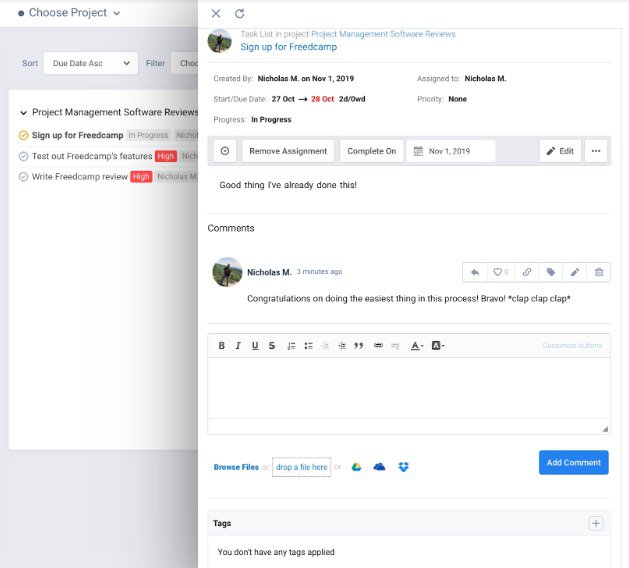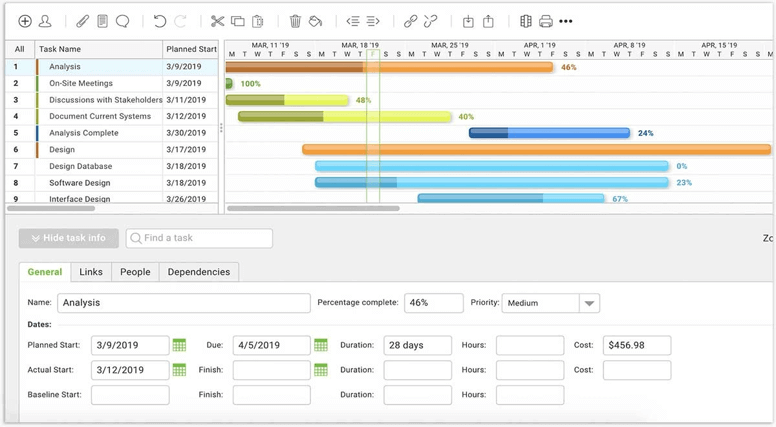- Things 3 5 1 – Elegant Personal Task Management Tools
- Things 3 5 1 – Elegant Personal Task Management Tool Free
- Things 3 5 1 – Elegant Personal Task Management Tool Air Force
- Things 3 5 1 – Elegant Personal Task Management Tool Army
- Things 3 5 1 – Elegant Personal Task Management Tool User Guide
- Things 3 5 1 – Elegant Personal Task Management Tool Tmt
Project-based work can get overwhelming quickly. Missed deadlines, forgotten milestones, and messy spreadsheets cut the motivation and lead to lower work productivity. And working without a clear project plan will lead your team to a crossroads with no clear action plan. That’s why it’s crucial to create a detailed project timeline.
The first five are recommended for small demands or personal tasks, while the sixth is best when you need to escalate services and time is a precious resource. 1- Getting Things Done (GTD) Developed by David Allen, this is one of the simplest and most objective time management tools and techniques. With the GTD method, you can increase. Telescope Task Manager is a simple Project Management tool designed to be the easiest and fastest solution for team collaboration while on a budget. As the head of global sales, Alice is finalizing the.
What is a project timeline?
A project timeline is a chronological breakdown of all the tasks that need to be finished in order to complete any project. These timelines shape the entire project and keep everyone informed and aligned at every stage of the project.
The benefits of a project timeline
By creating a project timeline for each new project, you’ll benefit in multiple ways:
- The project management timeline helps to set clear directions and priorities.
- Everyone will be on the same page.
- It’s easier to make decisions based on priorities.
- Everyone’s goals and objectives are aligned.
- Your entire team knows which tasks need to be completed next.
How to create a project timeline?
Setting up a project roadmap doesn’t have to be complicated. By using online project management software, you can easily track and manage planned activities, project timeline, and keep your eye on the project progress.
Start developing your project management timeline by reflecting on long-term goals and time frame, and move on into greater detail.
Read on:41 Best Project Management Software and Tools

Step 1. Define your project goals
Creating a project strategy starts with a clear understanding of the final goal – either the outcome you’ve agreed on with a client or a business goal you’d like to achieve with a long-term project. To avoid any misunderstandings already in the planning phase, make sure the entire team agrees on the primary goal.
Tip: Think about the time in the future when you’ve completed the project. What achievements are you most proud of? Add these small wins alongside your primary goal to keep your team’s motivation and the quality of work high throughout the project.
Step 2. Write down important milestones
Project milestones are small actionable steps that lead to your main goal, and a great way to illustrate, schedule, and evaluate your project’s progress. They could signify key meetings, approvals, project phases, or partly delivered work.
By breaking big projects into smaller chunks, your team can also keep track of every project phase and notice the shortcomings, such as crossed deadlines sooner. If you’re unsure what the milestones for your project are, the chances are that you haven’t thought through the primary goal. So step back and reconsider your project’s main objective.
Tip: When working on a complex project, assign each milestone to a specific team responsible for its completion. This way, you always have someone overseeing each milestone’s progress.
Read on:Project Management in 2000 vs. 2017 [Infographic]
Step 3. Decide on the timeframe
After you’ve made a list of all the critical project milestones, it’s time to set a reasonable timeframe for achieving each of these objectives.
But be careful not to overrate your team’s capacity in this phase of planning. Failing to meet the first milestone will also mean less time for the next ones, leading to many crossed deadlines.
Read on:The Complete Guide to Winning Project Management Sprints
Tip: Recall your past projects – how much time did it take to reach specific milestones? Use this information as a guideline for deciding on the timeframe for each new milestone.
Step 4. Find the best way to visualize your roadmap
Things 3 5 1 – Elegant Personal Task Management Tools

A thorough project management schedule can be used throughout the project, not just in the initial planning phase. You should be able to use the timeline to keep track of project progress and to communicate progress at status meetings.
To get the maximum benefit out of a project plan, it should be logical and visualized. Answer a couple of questions to decide which layout to use:
- Are all parts of the timeline shared with the entire team? – If not, you’ll need to create multiple project timelines plus a “master timeline” with all the project steps.
- Do you need to make edits as the project progresses? – In this case, make sure that your project timeline’s in an editable form (not a PDF or a printed version)
- Do you need to add multiple layers of information? – Complex projects need sub-tasks to manage each activity. You might need a better tool than a spreadsheet to keep track of every important detail.
Tip: Sometimes, a simplified project timeline isn’t complex enough to take your projects from start to end. You might need a project planning or project timeline tool.
Step 5. Set up your project management timeline
Now that you’ve got a clear overview of your project goals, milestones, and timeframe, it’s time to create a project timeline. Multiple tools can help you come up with an actionable project plan. Think twice before you download an Excel project template. These free templates might be easy-to-use, but lack the flexibility needed to plan more complex projects.
If you want to be able to track your project progress, and have a complete overview of your team’s work, start using a project management tool. These tools are built to help you with every aspect of project management, including work planning, task management, budgeting, and business intelligence. Some tools even have a project dashboard that lets you track all projects on a single page.
Tip: Consider how you’re going to report on your project progress and make sure your timeline facilitates the analysis process.
Read on:10 Genius Project Management Trends You Haven’t Heard Of
Step 6. Review your timeline with all stakeholders
Before you finalize your project timeline, take an extra step that will pay off in the future – review the project plan with your team and clients.
Start with your team. Ask everyone to take a look at your roadmap and check whether all the critical milestones are present. Encourage people to speak up if they notice something questionable or consider your timeframe too packed. It’s better to set things straight before starting the project, not a couple of weeks into the progress.
Don’t forget to ask for your client’s approval. You don’t need to show them the entire project timeline, but ask them to confirm some of the milestones and delivery dates. Explain why each delivery or approval date was set for a specific time, and ensure that all your accounts are happy with their project’s timelines.
Tip: Leave a few unscheduled days between each milestone to catch up with potentially passing deadlines.
Step 7. Get to work!
After you’ve set up your project management timeline and have everyone’s approval, it’s time to get into action. Share the final roadmap with your entire team and explain how to use the framework.
Ensure once more that everyone’s aware of their work tasks and contribution to each step of the project. If someone’s not engaged in a certain project step, find ways to use their potential and time on other projects instead.
Having a clear overview of upcoming and completed tasks helps to keep the level of motivation high and increases your team’s overall productivity.
Things 3 5 1 – Elegant Personal Task Management Tool Free

Things 3 5 1 – Elegant Personal Task Management Tool Air Force
Tip: When working on complex projects, conduct brief one-on-one meetings with your team members to ensure they’re on the right track.
Step 8. Report, analyze, and improve
Things 3 5 1 – Elegant Personal Task Management Tool Army
One of the main benefits of having a project timeline is that you’re able to track your team’s progress. You’ll know what everyone’s working on, where you’re currently standing, and can easily communicate this information to other counterparts.
Make your project timeline actionable and reflective of the real-time situation by asking everyone to mark their progress.

If you’re using online project management software, progress could be tracked by marking project tasks done. Find a method that works best for you and your team. Check this article to learn about time tracking best practices and apply these to your project management.
Things 3 5 1 – Elegant Personal Task Management Tool User Guide
Tip: Analyzing and comparing the outcome of completed projects gives valuable insight into your team’s performance. Use this data to compare, learn, and modify to increase the efficiency of your project planning.
Quick recap
Things 3 5 1 – Elegant Personal Task Management Tool Tmt
Having a project timeline for each significant project will help you deliver on time and focus on top priorities. By taking these eight steps, you can create foolproof project management timelines that will take your team forward:
- Define your project goals
- Write down important milestones
- Decide on the timeframe
- Find the best way to visualize your roadmap
- Set up your project management timeline
- Review with all stakeholders
- Get to work and get everyone on the same page
- Report, analyze, and improve